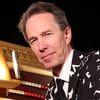Red Baraat and Sunny Jain, featuring Jain on dhol and lead vocals, Rohin Khemani on percussion, Tomas Fujiwara on drums, Arun Luthra on soprano sax, Mike Bomwell on baritone sax, Sonny Singh on trumpet, MiWi La Lupa on bass trumpet and John Altieri on sousaphone; 8 p.m., Saturday, March 2, Rialto Center for the Arts; tickets: $39.72 to $69.64; 80 Forsyth Street NW, Atlanta, 30303; information: 404-413-9849; www.rialtocenter.org/
The Rialto also presents dance, classical music and educational events, but has a strong presence in the world music and jazz genres.
Among the world music and jazz performances scheduled at the Rialto this spring are the following:
Dianne Reeves
Dianne Reeves, a four-time Grammy-winner, has performed with Wynton Marsalis and the Lincoln Center Jazz Orchestra and has served as the Los Angeles Philharmonic's first-ever creative chair for jazz; Saturday, March 16.
Hugh Masekela
Known to American audiences by his jazz pop hit “Grazing in the Grass,” which hit No. 1 in 1968, trumpet and flugelhorn player Hugh Masekela was reintroduced to the U.S. in the 1980s while touring with Paul Simon. A timeless jazz musician who adds a South African lilt to his interpretations, Masekela’s name is synonymous with the anti-apartheid movement; Saturday, April 6
Eddie Daniels
Extraordinarily fluent clarinetist Eddie Daniels often devotes time to both Mozart and Miles in his concerts, and will be performing jazz and classical music, with the Georgia State University Jazz Band, under the direction of Gordon Vernick; Friday, April 12.
Maestros in Concert
Maestros in Concert brings together Zakir Hussain, a master of North Indian percussion, and Pandit Shivkumar Sharma, one of the great players of the santoor, a 100-stringed Kashmiri folk instrument; Saturday, April 13.
Tiempo Libre
Expect Latin jazz from Tiempo Libre, a Miami-based septet of Cuban emigres playing the high-energy “timba” music of their home country; Saturday, April 27.
Sunny Jain — an Indian-American whose brass-and-drums band, Red Baraat, performs in Atlanta this week — grew up living two lives.
In one, he was a typical Westerner, a Rochester, N.Y., native who loved rock ‘n’ roll, hip hop and jazz, who played in school bands and studied drums at Rutgers and New York University.
In the other, he was the son of North Indian transplants, attending Jainist religious ceremonies, learning devotional songs, traveling back to India with his family for weddings and special occasions and speaking Hindi and Punjabi (along with English) at home.
“I had my Indian side, and I had my American side,” said Jain, 37, in an interview from his Brooklyn home. “They didn’t intertwine that much.”
But five years ago, something jolted the jazz drummer when he began playing a drum native to his parents’ country. That instrument finally blended his two lives. The cocktail that resulted is the music of the band Red Baraat, a combustible fusion of North Indian wedding music and American brass band parade swagger.
Red Baraat typifies the sorts of shows coming to Atlanta this spring at the Rialto Center for the Arts, a retro-fitted downtown movie palace with eclectic programming. Owned by Georgia State University, the Rialto will host flamenco music, Indian percussion master Zakir Hussain, classical offerings and music from such jazz giants as Dianne Reeves and Eddie Daniels.
It’s a mix of world music and American vernaculars — which describes Red Baraat as well. Until recently, Jain’s music was less of a hybrid and more straight-ahead jazz. The drum that propelled Jain on his current course is called a dhol.
Most Americans familiar with Indian percussion associate it with Hussain’s instrument, the tabla, which is played seated, and therefore is anchored to one spot. The dhol, a marching drum that is an essential part of many Bollywood soundtracks, is played standing, not seated, and is whacked at both ends.
It lets the drummer stand, dance, move to the front, join the parade. Playing the dhol, “a lot of the nuances are gone, but what does come out is that rawness, that visceral power,” Jain said. “I wanted to reach more people, and you can do that with a mobile drum.”
Another thing happened when Jain traded the trap set for the dhol: his shows became parties. When he stood up, his audience did too — and they started dancing.
“Baraat” means “procession,” usually the procession that is part of a North Indian wedding, including a traditional brass band. Red Baraat re-imagines that tradition through a cross-cultural lens.
With five horns and three percussionists, the band calls to mind the contemporary brass bands in New Orleans, like the Rebirth Brass Band, and though Jain has played New Orleans several times, this month the band played its first Mardi Gras. “It was pretty wild, amazing, surreal and full of sleep deprivation,” he said.
Jain writes much of the music for the band, leaning toward the Punjabi flavors of his culture, and while three members of the band have Indian heritage, the Red Baraat sound owes much to the Go-Go music of Washington, D.C., and the funk of James Brown.
Jain asserts that the term world music can encompass the kind of blended sounds that come out of Brooklyn, which is where he and his band mates live.
“We’re all just Americans,” he said.
About the Author






